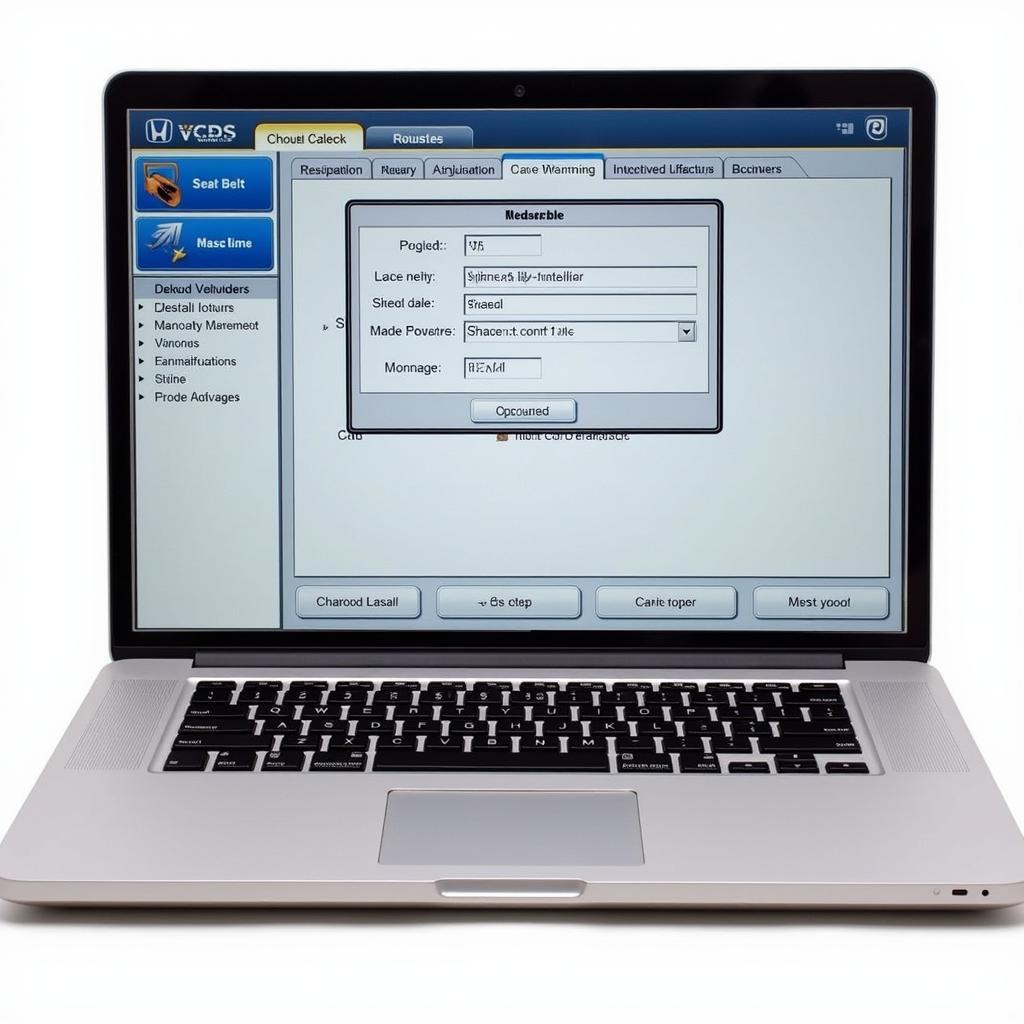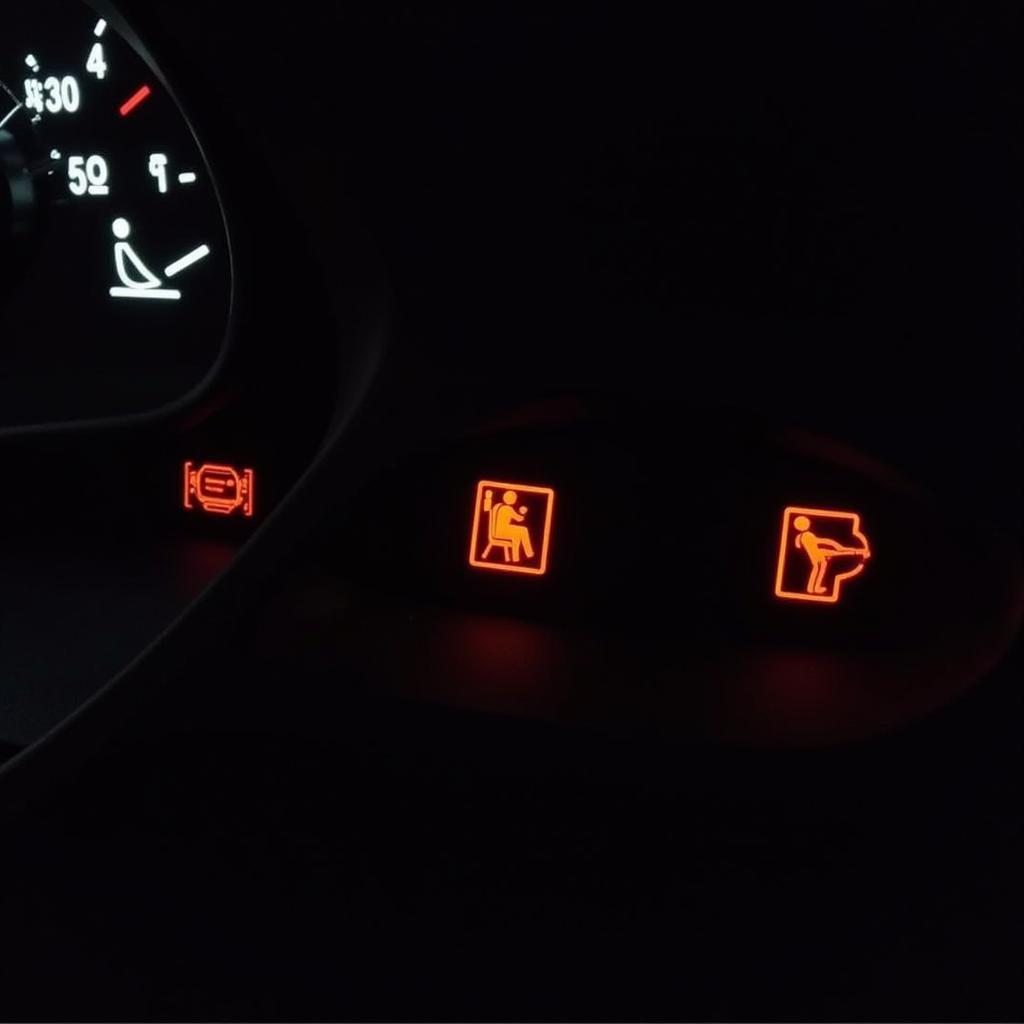Drivers of the venerable Honda Accord, particularly the 15th generation model, often seek ways to disable the seat belt warning. While prioritizing safety is paramount, and we strongly advise against tampering with safety systems, there are situations where understanding these procedures might be beneficial. This article delves into the intricacies of the 15 Accord’s seat belt warning system and explores potential avenues for modification.
Disclaimer: This information is for educational purposes only. Modifying your vehicle’s safety systems could have legal ramifications and potentially void your warranty. Always prioritize safety and consult your vehicle’s manual or a qualified Honda technician for guidance.
Understanding the 15 Accord Seat Belt Warning System
The 15th generation Honda Accord boasts a sophisticated seat belt warning system designed to enhance occupant safety. This system employs sensors in the seat belt buckles and seat occupancy detectors to determine if passengers are buckled up. If the system detects an unbuckled seat belt while the vehicle is in motion, it triggers a series of escalating warnings:
- Visual Warning: A prominent icon, typically depicting a seat belt with a cross through it, illuminates on the dashboard instrument cluster.
- Audible Warning: A repetitive chime sound accompanies the visual warning, further alerting the driver and passengers.
- Persistent Chime: In some cases, the chime may continue for an extended period or until the seat belt is fastened.
Common Reasons for Disabling the Seat Belt Warning
While disabling safety features is generally discouraged, several scenarios might lead 15 Accord owners to consider this option:
- Temporary Deactivation: Mechanics and technicians might need to temporarily disable the system for diagnostic purposes or specific repairs.
- Aftermarket Installations: Installing aftermarket seats or modifying the vehicle’s interior could interfere with the seat belt sensors, necessitating adjustments.
- Track Use: In controlled environments like racetracks, where safety harnesses are employed, the factory seat belt warning system might be redundant.
Methods for Disabling the 15 Accord Seat Belt Warning
It’s crucial to reiterate that tampering with your vehicle’s safety systems can be risky and is often not recommended. Before attempting any modifications, consult your vehicle’s manual or a qualified Honda technician.
-
VCDS Seat Belt Warning Variant Coding: The 15 Accord utilizes a complex network of computers and modules. Advanced diagnostic tools, like VCDS (Vag-Com Diagnostic System), allow access to these modules. Through careful coding adjustments within the appropriate modules, it might be possible to alter the seat belt warning parameters. This procedure requires specialized knowledge and is best left to experienced professionals.
 VCDS Seat Belt Warning Adjustment
VCDS Seat Belt Warning Adjustment -
Seat Belt Buckle Modification: We strongly advise against this method. Some individuals attempt to bypass the system by modifying the seat belt buckle itself. This often involves inserting a device or manipulating the buckle’s internal mechanism to trick the system into thinking the seat belt is fastened. However, this is extremely dangerous and can compromise the seat belt’s integrity, potentially leading to serious injuries in an accident.
-
Professional Installation of Defeat Devices: There are aftermarket devices available that claim to disable seat belt warning systems. However, the legality and safety of these devices vary widely. Installing such devices could have legal implications and might void your vehicle’s warranty. It’s essential to research thoroughly and consult with legal professionals and qualified mechanics before considering this route.
Seat Warning Lights: Understanding the Different Signals
Beyond the seat belt warning, your 15 Accord utilizes various warning lights to communicate potential issues. Understanding these signals is crucial for addressing potential problems promptly.
- Airbag Warning Light: This light, often featuring an SRS (Supplemental Restraint System) symbol, indicates a potential problem with the airbag system. This could range from a faulty sensor to a more serious issue. Immediate attention from a qualified technician is necessary.
- Seat Occupancy Sensor Warning: Some 15 Accord models are equipped with seat occupancy sensors that determine if the front passenger seat is occupied and adjust airbag deployment accordingly. If this sensor malfunctions, it might trigger a warning light.
 15 Accord Dashboard Warning Lights
15 Accord Dashboard Warning Lights - Other Seat-Related Warning Lights: Depending on the trim level and options, your 15 Accord might have additional warning lights related to seat position, heated or cooled seats, or power seat functions.
[vcds seat belt warning variant]
FAQs About Disabling the 15 Accord Seat Belt Warning
Can I disable just the chime and keep the visual warning?
The ability to isolate and disable specific aspects of the warning system varies depending on the vehicle’s configuration and the software version.
Will disabling the seat belt warning affect my insurance rates?
While disabling the warning itself might not directly impact your insurance rates, any accidents that occur while the system is deactivated could lead to complications with insurance claims.
Is there a way to adjust the sensitivity of the seat belt sensor?
Adjusting the sensor’s sensitivity typically requires advanced diagnostic equipment and knowledge of the vehicle’s computer systems.
[seat warning lights meaning]
Conclusion
While the desire to disable the 15 Accord’s seat belt warning is understandable in certain situations, prioritizing safety should always be paramount. Tampering with safety systems can have serious consequences and is generally not recommended. If you have concerns about your seat belt warning system or need assistance with related issues, consult your vehicle’s manual or a qualified Honda technician for expert guidance. Remember, staying informed and making responsible decisions ensures your safety and the well-being of your passengers on the road.
